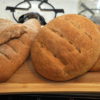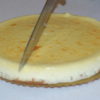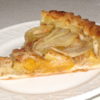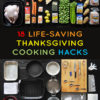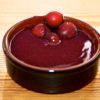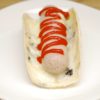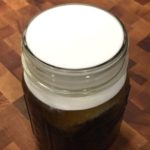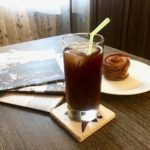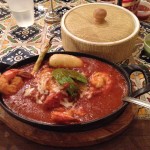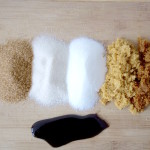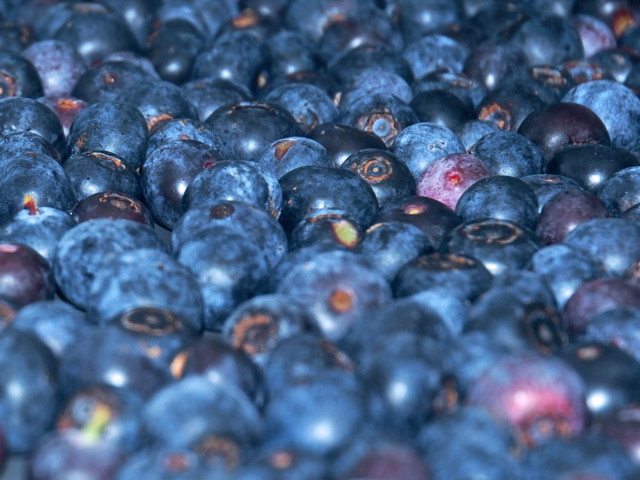
This is a short post, following the great one of the blueberries. Pick your own berries type of farm are very popular especially here in Florida with the only drawback the quantity, that unless you have a family of 10 you cannot finish alone in a reasonable amount of time. They go bad within a few days, by shedding moisture, wrinkle and shrink. The modern solution to the problem is the freezer. The freezer that, is being extensively used to freeze from water to meats.
With exception of ice cubes, water is a big issue in freezing everything from corn and blueberries to peaches and meats. In a process called crystallization the water molecules are packing each on top of the other and form crystals, ice crystals. Water has this peculiar behavior and becomes bigger when solid compared to liquid. So if you have a blueberry and freeze it, the water will expand and will force many of the little compartments to collapse. When now you thaw the berries there is nothing to hold the melted water and it will ooze out, and the material you just thawed is a mash.
There is a way to get around that, to minimize the phenomenon and reduce the amount of lost moisture and reducing the mashing, during thawing. The answer is in the ice-cream. Ice cream remains soft and scoopable due to physics. If you take water it freezes at 0 C or 32 F. If you add salt or sugar or any other molecule for that mater, it will interfere with the structuring of the molecules preventing the crystallization. To crystalize a solution like that, you need to go to lower temperature. The more additives you have the lower the temperature. Ice cream has so much sugar, that never freezes fully. While freezing ice cream the ice crystals start forming and the relative concentration of the sugar in the liquid solution rises making the remaining solution harder and harder to freeze. There is a point where this actually cannot happen anymore resulting in a highly sugary solution with ice crystals suspended in it. Now, if you can manage correctly your thermodynamic parameters, and manage to sustain many but small crystals instead of few and large then you will be able to reduce the mashing and oozing from the berries or the soon to be thawed food item.

Smaller ice crystals are resulting in less damaged cells and liquid compartments and therefore less mushiness and liquid loss.
So how do we do it the? Ok adding sugar will do the trick of course but that will turn the berries to jam but that ‘s not what we are after here. So we rule out the addition of any substance. What else… Thermodynamics! We have first to understand the concept of heat flux. It is the rate with which heat is escaping from an object. It is energy per time unit. The rate is regulated by many different parameters , but the most critical is the temperature difference between the frozen we extract heat from and the environment, and the mass of the object. The larger the size of an object (therefore the mass) the lower the flax. On the contrary the larger the temperature difference the higher the heat flux. While cooling however the temperature difference will be reduced slowing down the heat flux.
 The heat flux as a function of the mass. More mass less heat flux.
The heat flux as a function of the mass. More mass less heat flux.

The heat flux as a function of the temperature difference. Higher temperature gradient higher heat flux.
Time is the other important element we need to consider. The more time the water molecules are mobile while we freeze them the more time they will have to find the ice crystals and stick on them.So we need to immobilize them as quickly as possible. So we just added a new parameter in the quest for freezing; Time. But what is the definition of freezing. Well as we said the liquid in the frozen to be food, will never become completely frozen unless we have liquid Nitrogen or Helium. Home cooks do not have that so we go to the next best thing which is our freezer. The freezing will be completed when the temperature all over the food reaches the same temperature as the freezer. This is called equilibrium. The fastest we remove the heat the quickest it reaches to this point.

Equilibrium as function of the heat flux. The fastest the heat is removed the quicker we reach equilibrium.

The ice crystal size as function of the required time before freezing is achieved. Longer time larger crystals.
Careful now. Although we said that the higher the temperature difference is the higher the heat flux that removes the heat from the berries will be, it does not mean that the higher the berry temperature is the better the heat flux. That is simply because we care only for the case that water start turning into ice. That is just above freezing point 4C or 38F. What it means is that we need to put the berries in the refrigerator for a good couple of hours and chill them before we add them to the freezer. The moment we add them to the freezer the higher the heat flux from the berries to the environment the faster the freezing the smaller the crystals, as is illustrated to the excellent drawing.

The ice crystal size as function of the heat flux. Higher heat flux smaller crystals.
So have discussed the thermodynamics of the procedure we can extract a few simple rules:
- The smaller the crystals the more intact object we will have after thawing
- The faster the process the smaller ice crystals.
- The smaller the size of the item to be cooked the faster it will freeze.
- The higher the heat flux we can achieve the shorter the time before freezing.
- The closer to the freezing point we bring our objects without freezing them the shorter the time to freeze.
Have said that we can simply now froze the berries (finally).
- I.Wash and dry the berries.
- II.Chill them in the refrigerator for a good couple of hours at least.
- III.Place them in a single layer in a pan and put the pan on the floor of the freezer. Just as you can see bellow. The single layer will ensure that there is the minimum mass that will be frozen.

- IV.Once that is done you can move them to a ziplock bag. They are amazing…. Even for snacking them just like that frozen.
We talked about peas but the same procedure goes for other small items like, corn kernels, cranberries etc. Larger items like meat can slices think wrapped in foil (for sanitation) and repeat as we said.
This was a technical session but will help you grasp concepts like ice cream, IQF, granites etc.


